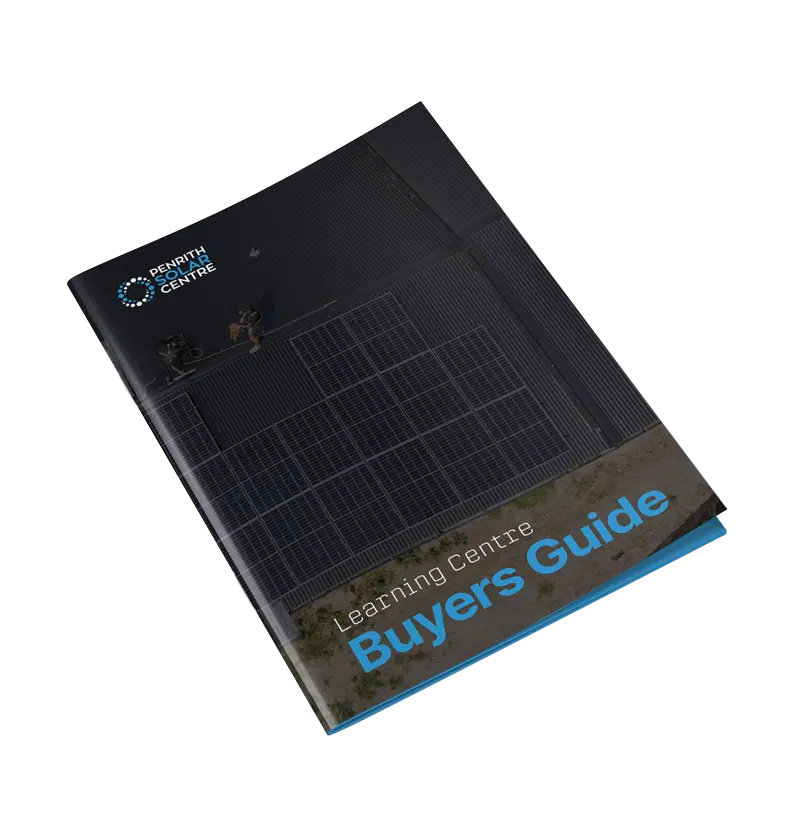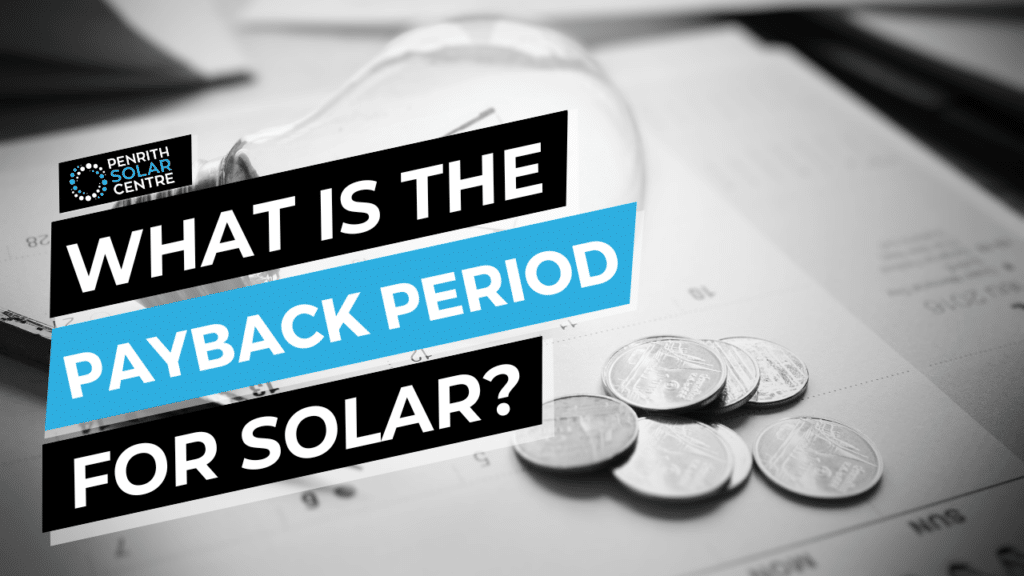
If you’re considering solar, you’ve probably seen the upfront cost and made a face. There might even have been some wrinkles in your forehead as you concentrated on the figures. Isn’t solar supposed to save you money? It’s a significant investment for most people, and the second question after “How much does it cost?” is often “When will it pay for itself?”
Return on investment for a solar system is not a fixed timeline. The cost of electricity is increasing, and the cost of solar technology is going down. Your energy needs are constantly in flux as your life evolves and changes. All these variables (and a few others) contribute to when your new solar system will pay for itself.
It’s different for everyone. It depends on what your needs are, what your bills are, and what solar system you choose to invest in.
At Penrith Solar Centre, we’ve been installing solar systems for years. We have loads of happy customers, and many of them started their respective solar journeys with scepticism. With a better understanding of how your system will work for your needs, you’ll be empowered to make informed choices about your solar purchase. So while we may be biased about who we think you should invest in, we’ll do our best to remain unbiased as we get into the specifics of what affects your solar payback period.
In this article, you will learn:
- What Affects the Cost of a Solar System?
- How Do You Calculate ROI for Solar Panels?
By the end of this article, you’ll be ready to ask your solar salesperson hard-hitting financial questions about cost, return, and the factors that contribute to those numbers.
What Affects the Cost of a Solar System?
Fortunately, your energy bill will give you some information about how much electricity you use.
It’s a tricky business to estimate the cost of a solar system because so many factors play a role in determining the overall upfront cost of the system.
The cost of the equipment is part of it. The other big factor is the installation cost.
In order to determine the cost of the equipment, you need to know what type of solar system you’re interested in installing. Will it be an Enphase microinverter system or one of the options of a central inverter (string) system?
If you’re interested in a deep dive into the differences between microinverter solar systems and string solar systems before going any further in this post, you might want to check out the following article titled, Microinverters vs. String Inverters: An Honest Comparison.
When pricing a solar system, you’ll want to get out of the mindset of dollars and cents. Certainly, the cost of the system is important, but thinking in terms of money only is half the picture. Your electricity provider thinks in other units of measurement: watts and kilowatts.
Thinking in terms of watts gets you the most accurate calculation of what your home needs and what your solar system can produce. Think of wattage as a speedometer for electricity. It’s going to gauge how much power is needed to keep your lights and appliances running.
A solar system with microinverters will cost more per watt than a string inverter solar system. A microinverter system is around $1.30 – 1.60 per watt out of pocket, while a string inverter system is closer to $0.60 – 1.00 per watt.
Microinverters are devices mounted underneath each solar panel to convert the direct current into alternating current for the home to use. There is one on each solar panel, whereas a string inverter system has just one inverter on the side of the house doing the same work for the entire system.
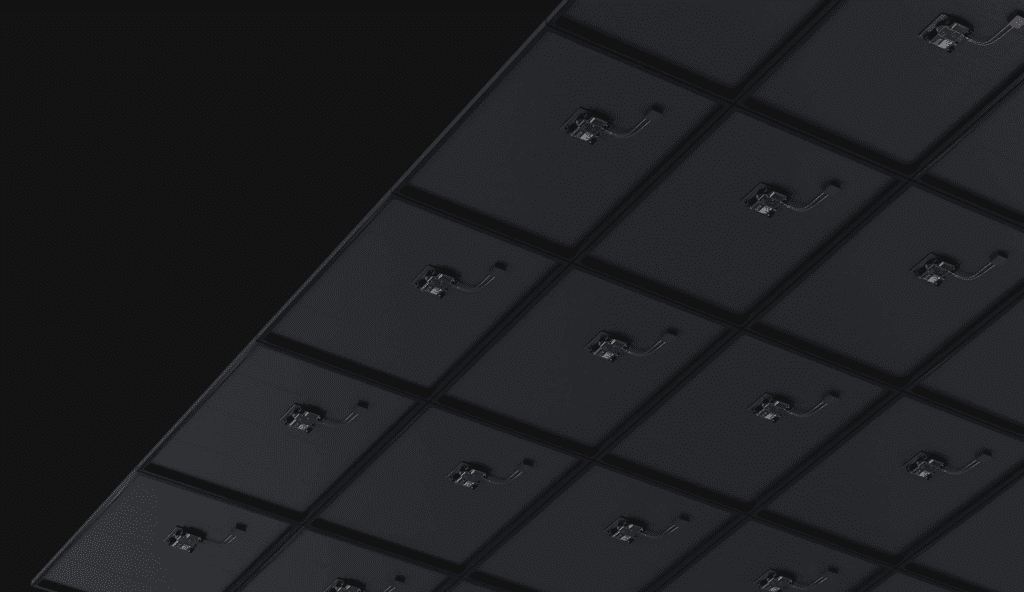
Calculating the efficiency of your system is a huge part of its value over time. As string systems age, the inverter will reach the end of its 10-year warranty period and will need replacing. This ought to be factored into the cost.
If you’re interested in learning more about the cost of a microinverter solar system, you might want to check out the following article titled, How Much Does a Microinverter Solar System Cost?
The other part of the cost of a solar system is the quality of the installation. It costs money to install these systems. In the Sydney region, you can expect two different business models you’ll encounter when pricing installation costs.
There are in-house installers who are a top to bottom, inquiry to installation solar systems service. They handle your questions and installation from the moment you reach out to them for a quote to the moment they set up the consumption monitoring app on your phone (and after that too, when it comes to fulfilling warranties). Penrith Solar Centre is one of these types of companies.
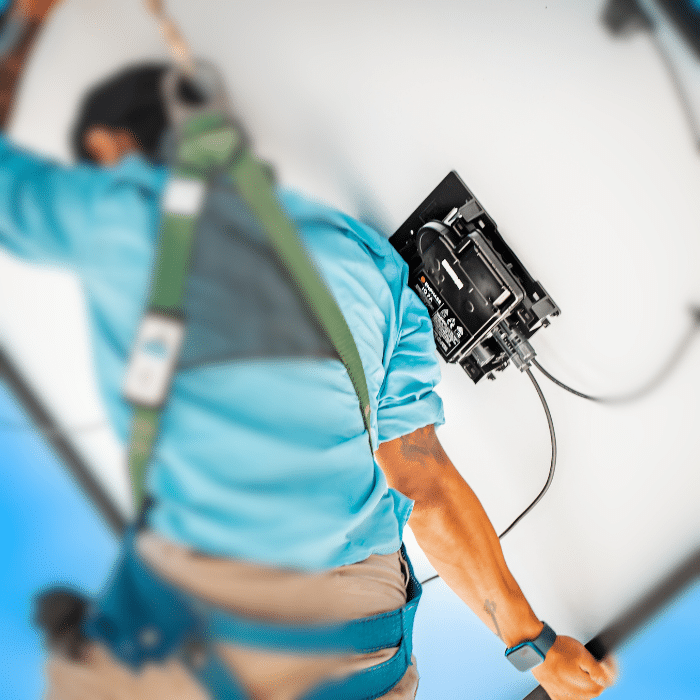
There are also subcontractors who are individual electricians who install solar. They are not a sales company, but instead independent contractors who work for solar companies that sell solar systems. This installation type is a little more common for string inverter solar systems – which are more popular in Australia because of their low price point.
In-house installers will cost more money upfront than working with a sales company and the subcontractor they hire for your installation. For more information regarding the differences between in-house installers and subcontractors, you might want to check out the following article titled, In-house Installers vs. Subcontractors: Which is Better?
While your energy needs will be the largest contributing factor to the cost per watt of your solar system, there’s another big one to consider: roof space. If you need more solar power, then you’ll need more panels. And if you need more panels, you might have to get creative with available roof space.
A well-designed solar system is one where you and your installer have had a detailed conversation about your needs and when you use electricity in relation to your roof space. For an extensive dive into this topic, you might want to check out the following article titled, Which Way Should Solar Panels Face in Australia?
How Do You Calculate ROI for Solar Panels?
The ROI of a solar system depends on the initial investment (the cost of the system) and how much money you are saving per year by not spending it on your energy bills.
You’ll be able to get the upfront cost of the system from your solar installer who will ask you questions about your energy needs and talk you through choices to maximise your solar efficiency.
Let’s assume that you’re being charged $0.32 per kilowatt hour for electricity from your energy retailer. The average for the Sydney metro area is between $0.28 – 0.35.
Let’s also assume that your household is using 1,000kWh of electricity per month. That’s kind of a lot, but round numbers make the math easier.
So, your electricity bill per month will be 1,000kWh x $0.32 = $320 per month ($960 per quarter).

Next, we need to estimate the amount of electricity you’ll get from your solar system once it’s up and running.
The sun isn’t shining on your panels for all 24 hours in a day. The amount of sunlight you’re getting in the early morning and late afternoon hours isn’t as efficient as the amount of sunlight you get at midday.
Let’s assume that you can self-consume 40% of your total electricity, selling the rest for a feed-in tariff.
40% of 1,000kWh = 400kWh of self-consumed solar energy per month.

You’re using 600kWh of electricity from the electrical grid. Which costs: 600kWh x $0.32 = $192. That’s how much you’d spend on electricity each month from the grid.

But how much is it annually? Well, $192 x 12 = $2,304 per year.

You’ll spend $2,304 per year on electricity from your retailer with a solar system that can contribute 400kWh of solar electricity per month.
But how much are you saving per year in electricity usage because of your solar system? Well, 400kWh x $0.32 = $128 per month. Multiply it by 12 and you’ll get $1,536 per year in savings.
Let’s say you need around 33.3kWh per day and your solar system contributes 13.3kWh per day if you self-consume and your electricity retailer contributes 20kWh per day.
In order to produce 13.3kWh per day when you need it, your solar system would need to output a little over 5.0kW.
So, for a microinverter solar system, you would need about 12 solar panels on your roof for a total cost of around $10,300. This number is an average estimate that will vary from installer to installer.
The ROI is calculated with a simple formula: Initial cost of system / annual cost of electricity = your solar payback period
$10,300 / $2,304 = 4.5 years.

And that’s assuming a lot of variables that will be different for everyone. The cost of electricity will vary. So will the amount of electricity a household uses every day/month/year. How long will your solar system last? How much money would you spend on electricity from the grid instead of getting it from your solar system? These are all variables to consider when crunching the numbers to predict ROI.
You also have to keep in mind that these estimates and calculations assume that electricity will remain at $0.32 per kilowatt hour over the coming years. I’m going to bold and italicise this next point because it’s really important: the cost of electricity is rising.
For well-designed residential solar, the minimum ROI for a system with microinverters usually sits around 4 years.
To maximise ROI, using as much of your self-generated energy as possible is key. However, you should not expect to be fully self-consuming your energy in today’s energy marketplace without also installing a solar battery (more on that in a bit). That’s why we assumed a 40% contribution from the solar panels to the overall energy usage of the household.
Even after installing solar, some households might still have a power bill because their energy use increased despite the solar system. Changing electricity needs and the increasing price of electricity will affect the ROI.
Your energy needs increasing after the installation of your system will decrease the ROI period while the solar generates savings.
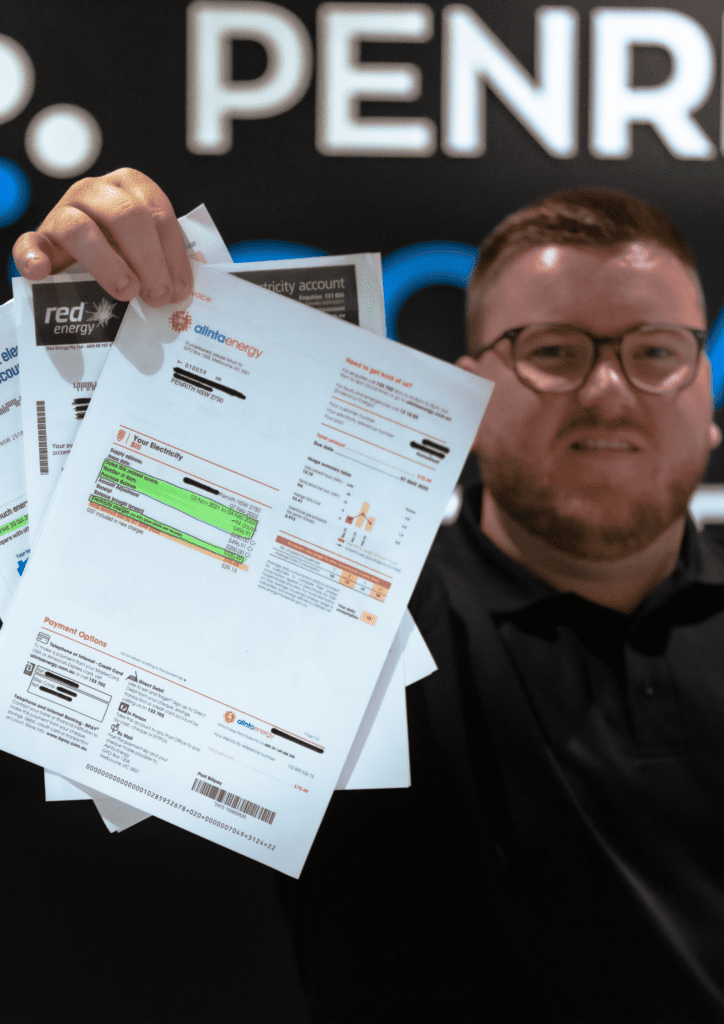
Some circumstances that might increase your energy needs could include having children, or renting out that spare bedroom to generate some additional income, or you might install a swimming pool that requires a pump to be working all day. There are any number of things that might increase your energy needs from the time of purchase throughout the lifespan of the system.
Quality matters. A high-quality microinverter solar system might pay itself off around 5 – 6 times throughout its lifespan of 20 – 25 years.
Some of the cheaper string inverter solar systems you see advertised – usually a 6.6kW system for around $4,000 – will pay themselves off in a couple of years (usually). However, because the equipment is cheaper, the money will only come back 3 times because you’ll need to replace parts or the whole system — possibly twice — in the time a microinverter system will still be operating.
More complex installations mean higher labour costs and a longer time to recoup that investment. Tricky roof designs might bump the ROI to 5 or 6 years due to increased installation time and costs. If the installer is there an additional day or two, the cost of the solar system jumps up to account for that labour.
Battery storage plays a crucial role in maximizing self-consumption. Adding a battery aims to achieve close to 100% self-consumption, significantly impacting ROI. But when a battery is added, like Enphase or Tesla, that 4 year ROI can stretch to 7 or 8 years. The most optimistic ROI with a battery is around 6 years.
If you’re interested in learning more about battery storage and why you might want to consider it, you should check out the following article titled, 7 Benefits of Adding a Battery to Your Solar System.
Energy plans also contribute to your return on investment. Selecting the right plan, aligned with your energy usage habits, is crucial. Families exporting most energy may value higher feed-in tariffs, while those self-consuming prioritise lower daily connection charges. The energy plan chosen directly influences the return on investment. Pennies will always add up to significant savings.
Generate Bright Financial Returns with Solar
By now, you should have a clearer understanding as to why you won’t get a straight answer for when you’ll be able to see a return on investment for your new solar system. There are so many determining factors to consider. From upfront costs, to installation, to equipment used, you’ll want a comprehensive evaluation of your needs before you sign on the dotted line for a new system.
Understanding the finances of your energy needs is the first step towards understanding how much solar will eventually cost you. We know that sounds like the type of ambiguity that a shifty salesperson might throw at you, it’s the reality of the solar industry.
At Penrith Solar Centre, we’re absolute perfectionists when it comes to installing high-quality systems. Without detailed communication between the installer and you the customer, it’s going to be difficult to nail down the figures you need for solar financial planning. Choose your installer carefully.
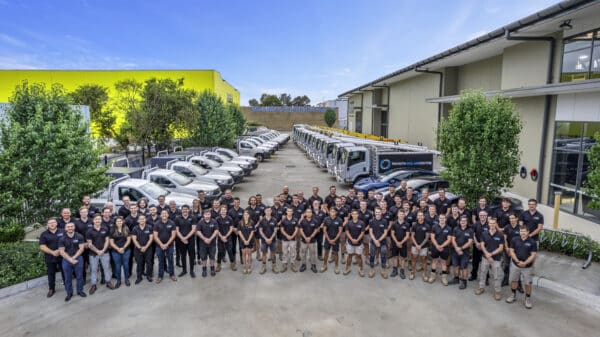
If you’re interested in learning more about the different types of solar systems out there, you might want to check out the following article titled, String Inverters vs Microinverters vs DC Optimiser: How Are They Different?
